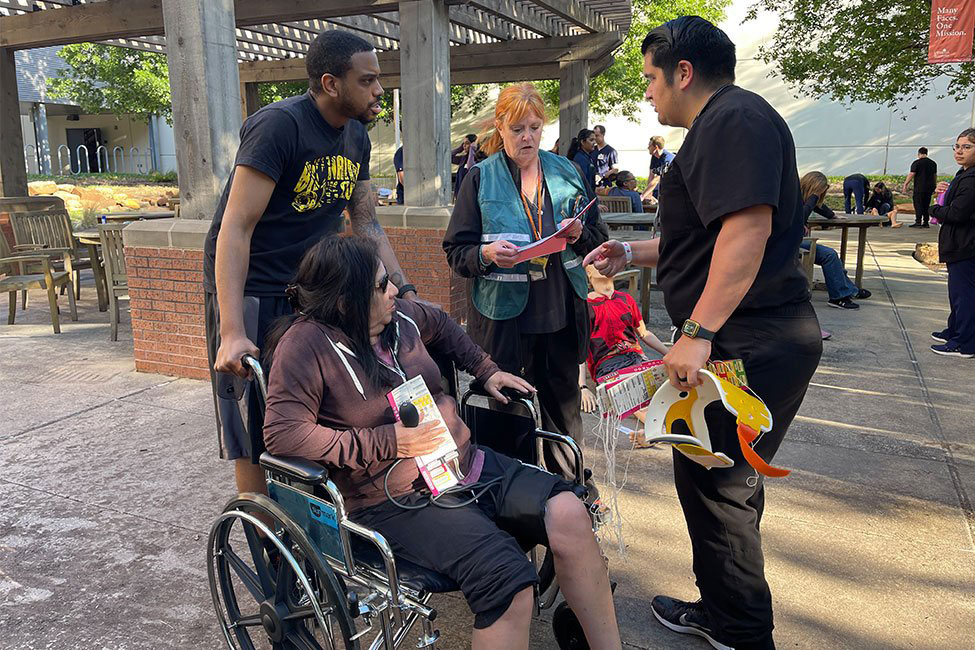UTHealth Houston students take part in mass casualty simulation

UTHealth Houston’s Center for Interprofessional Collaboration held its annual large-scale mass casualty simulation Thursday, April 11, an effort to train students in responding to mass casualty incidents.
In the exercise, held at the Cooley University Life Center courtyard, employees portrayed victims injured by a fictional mass shooting. More than 300 student participants from McGovern Medical School, Cizik School of Nursing at UTHealth Houston, and UTHealth Houston School of Dentistry worked together to provide medical care to the “victims.”
The courtyard exercise was followed by a hospital simulation where shooting victims were transported into an already bustling emergency room. Patients arrived in successive waves, mimicking the scenario of a genuine emergency department receiving casualties from a nearby incident.
The drill tested the students’ ability to assess injuries, administer first aid, manage vital signs, maneuver, provide comfort while victims waited for transport to the hospital, and work as a team in a chaotic environment.
Faculty instructors observed the students’ communication, collaboration, and leadership skills throughout the exercise. They also provided feedback on how effectively the students worked together and coordinated care for the simulated victims.
“It takes a lot of work to put all this together, but everything came together beautifully, and that’s thanks to all the faculty who put this together,” said Jordan Butler, coordinator II for Center for Interprofessional Collaboration.
Elda Ramirez, PhD, the Dorothy T. Nicholson Distinguished Professor at Cizik School of Nursing and co-director of the center, said she believes the event brings out the best in students.
“Events like the one held today pull the students together in a meaningful way because students do multiple things together as a group,” she said. “They get the scenario. Then, they come inside to follow through with the scenario into the tertiary care setting. It is so powerful because students start understanding the roles and more about communication. Leadership shows up and presents itself. As faculty, we’re very excited to watch it unfold.”
The scenario allowed the students to work with their peers and find their respective calls to action in stressful situations. That includes fourth-year McGovern Medical School student Lorenzo Baeza, who felt organically pulled into becoming a leader of the group.
“I’m usually one to take direction. In a hazardous situation like today, I felt prepared and I took charge,” he said. “I wanted to take care of the patients and get everything under control. Whatever I could have done to help the team was my main goal. I think we all fed off each other’s knowledge.”